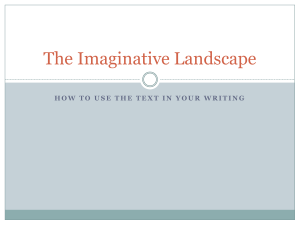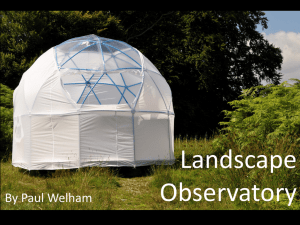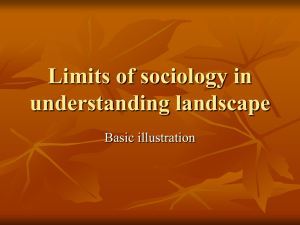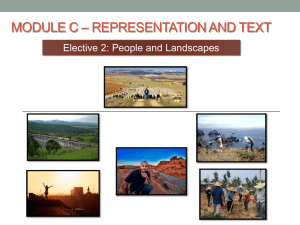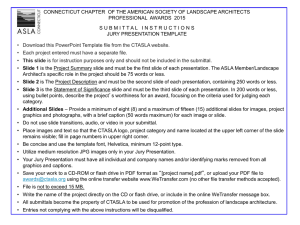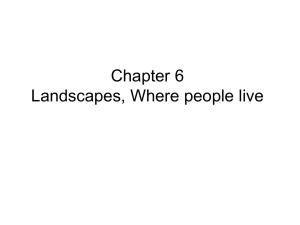Transition - Yr 12 Context Writing
advertisement
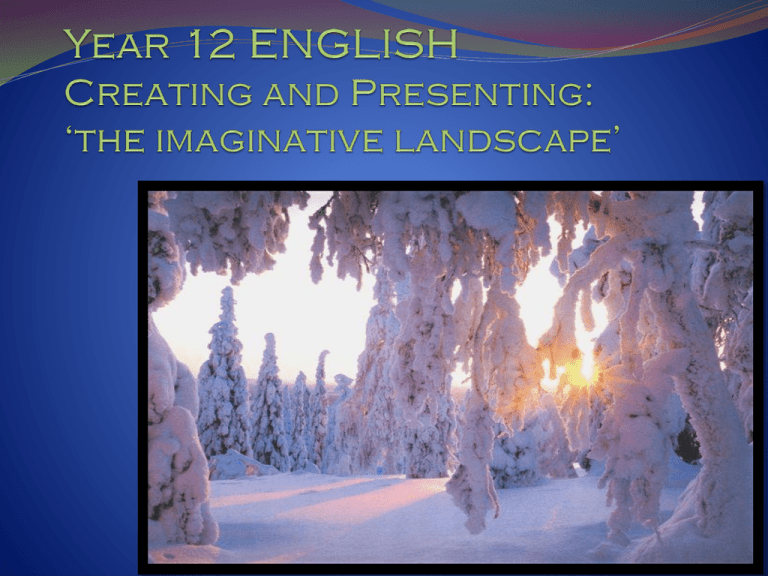
OUTCOME 2: Creating & Presenting CONTEXT: The Imaginative Landscape FOCUS TEXT/S: One Night the Moon, Island - short stories Students focus on the interconnection between reading and writing. Students should be able to identify and describe ideas and arguments presented in selected texts and draw on those ideas and arguments to create written texts for a specified audience and purpose. Students should explain their own decisions about form, purpose, language, audience and context in their writing. OUTCOME 2: Assessment In response to a specified prompt you will need to create a sustained piece of imaginative, expository or persuasive writing, based on ideas from the text/s. This includes a ‘statement of intention’ of your writing choices in terms of form/context, language, audience, purpose and connections to prompt and text. This SAC is worth 30 marks and must be completed in 150 minutes. You are only permitted to bring in a dictionary. UNIT 3, OUTCOME 2: Creating & Presenting Context: The Imaginative Landscape Texts: One Night the Moon (film) & Island (collection of short stories) ‘The Imaginative Landscape’ …what does it mean? The Context ‘The Imaginative Landscape’ can mean many different things. Part of the challenge of this unit is to develop an understanding of what it could mean and be able to recognise in the texts studied how other writers use the concept in their work. You will need to show your understanding of the context and texts studied by drawing inspiration for your own writing from the listed texts. You can begin to develop your understanding of the Context by thinking about the following things: The relationship between people and landscape. How our sense of who we are is connected with where we are. Landscape as: natural, man-made, imagined, social, emotional, fantasy, etc. How we experience our landscape through our: senses, memories, social values, historical context, perceptions, expectations, etc. Landscapes are always filtered through the author’s or artist’s consciousness, making the external environment and imagination inseparable. Do people see the landscape in exactly the same way, or is it interpreted and imagined differently by each person? Is a landscape only real when people interact with it? WHAT IS LANDSCAPE? There are many different physical landscapes that can elicit different ideas, memories or emotions Consider the images in the following slides. WHAT IS LANDSCAPE? For each slide, jot down some spontaneous notes following a SEE-THINK-IDEA thinking process: What do you SEE in the image? What does it make you THINK about? What writing IDEA could this lead to? See… Think… Idea…? See… Think… Idea…? See… Think… Idea…? See… Think… Idea…? See… Think… Idea…? See… Think… Idea…? See… Think… Idea…? What is a prompt? The prompt is a statement that provides a concept or idea to explore in relation to the context – The Imaginative Landscape. In Creating and Presenting SACs you will be asked to create an original piece of writing based on the prompt provided. The concept in the prompt needs to be the focus of your piece and should be explored and developed throughout. Prompts will narrow down the broad focus of the Context and help provide some direction to your writing. Here are a few examples: ‘Events and experiences influence the way we connect to place.’ ‘Our sense of the world is often determined by connections with physical places.’ ‘The landscape is a determining force in people’s lives’. What styles and forms of writing can be used? Throughout the year you will complete practice writing tasks in 3 different styles of writing: Imaginative, Expository and/or Persuasive writing. In the SACs and exam, you can choose to write in any one of these styles, or a combination. You will also practice writing in a variety of forms - you may choose to use one form at a time or attempt to incorporate multiple forms in a single writing piece. Here are some possible forms: Short story, personal reflection, essay, feature article, opinion piece, interview, fable, speech, etc. Statement of Intention (or Written Explanation) This is required in Context SACs to allow you the opportunity to explain and justify your inspiration, writing choices and your intentions for the piece. This enables you to demonstrate your understanding of the importance of authorial choices in writing for a specific purpose and audience. Statement of Intention (or Written Explanation) You will need to cover the following: FORM/CONTEXT: the type of piece you are writing and where it may be found, e.g. feature article in a travel magazine. LANGUAGE: Explain your language choices – say why you’ve used certain words, structures, characters. AUDIENCE: you need to aim your piece at a specified target audience based on many factors such as, age, interests, experiences, etc. PURPOSE: you need to explain your specific intention in writing this piece beyond it’s purpose as an English task. CONNECTIONS: to prompt and text. You can remember these features with the acronym: ‘FLAP+C’ You can write the statement of intention as yourself, in first person (i.e. ’I’). Practice writing task #1 Drawing on the ideas and advice presented by Archie Fusillo, write an original piece based on the following prompt: “It can be difficult to accept changes that occur to a familiar landscape.” This piece must be submitted to your class teacher on the first day of classes 2012 as part of your folio of writing. Task Criteria: Write a 400-600 word piece according to the following statement of intention information: STYLE: imaginative FORM/CONTEXT: A short story to be published in a collection of short stories by teenagers about “changes.” LANGUAGE: First person narrative voice to allow readers to step into the shoes of the character. Imagery and metaphor to enhance physical landscapes and other descriptive details of internal thoughts and feelings to convey emotional landscapes. A short story where an event occurs in the life of the character and is conveyed in a distinct beginning, middle and end structure. Aim to achieve character development in order to create a believable protagonist. Task Criteria: AUDIENCE: Teenagers who have experienced a significant change in their life that they struggled with. PURPOSE: To be a part of the collection of stories that aim to make readers feel like they are not alone in their experiences of significant changes in life. To also encourage them to persevere with, confront and accept circumstances that they can’t control. CONNECTIONS to prompt and text: Prompt: This piece will connect to the prompt by exploring a moment in a character’s life when they needed to endure a significant change that they found difficult to accept initially. Text: This piece connects to One Night the Moon. In the film the mother needs to endure significant changes to her life and the extreme difficulties of dealing with the loss after losing her daughter , but also the acceptance that eventually must follow.
